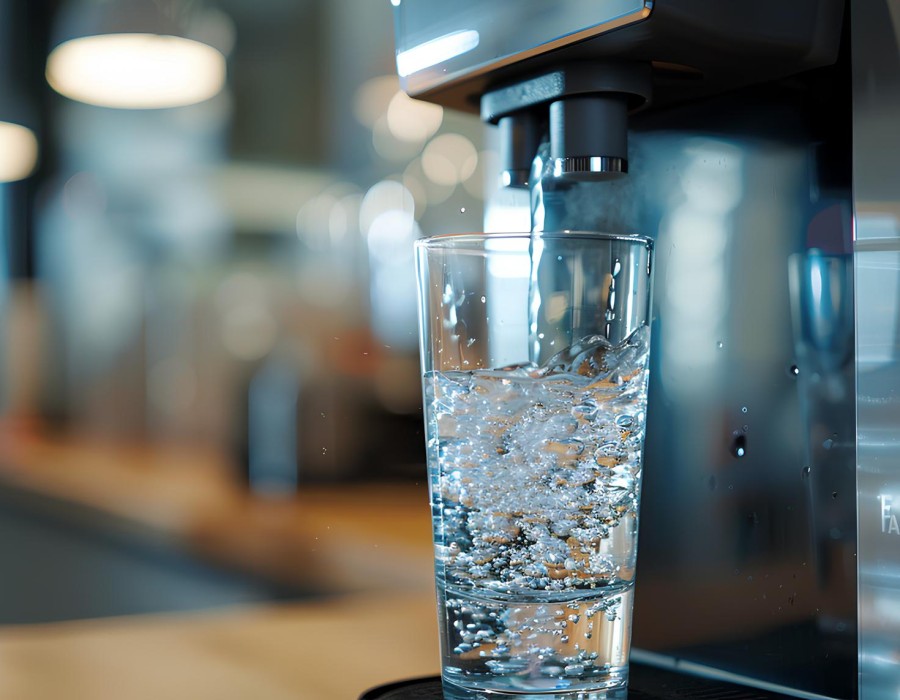How Does an Automatic Water Dispenser Function?
Water is perhaps one of the most ubiquitous resources in our daily lives. With technology progressing at rocket speed, innovations are now making our use of day-to-day utilities wiser, more convenient, and hygienic. One of these innovations is the automatic water dispenser. While conventional methods require you to press a tap, pump, or lever manually to obtain water, automatic dispensers offer a hands-free operation, ensuring convenience and improved hygiene. But how is an automatic water dispenser actually working? Let us delve deep into its mechanism, parts, and uses.
1. What is an Automatic Water Dispenser?
An automatic water dispenser is a type of dispenser that dispenses water as soon as one places his or her hand, glass, or container close to its sensor. It is more sanitary than manual taps and dispensers since one does not have to use physical contact with the device. Automatic water dispensers are used extensively in homes, offices, schools, hospitals, and even for pet feeding and irrigation systems.
The idea is about automation: sensing human touch or container placement with sensors and triggering a pump or valve to dispense water.
2. The Core Working Principle
Operation of an automatic water dispenser is centered on three core steps:
- Detection – A sensor senses a hand, glass, or object.
- Signal Processing – The sensor sends a signal to a circuit or microcontroller.
- Action – The microcontroller turns on a motor or a pump, delivering water.
As soon as the object is taken away, the sensor does not sense any signal, and the water supply is cut off automatically.
3. The Main Parts of an Automatic Water Dispenser
To better know how it works, let's dissect the main parts:
a) Sensors
The most crucial element of an automatic dispenser is the sensor. Sensors that are commonly used are:
- Infrared (IR) Sensor – Senses the reflection of infrared light when something approaches.
- Ultrasonic Sensor – Outputs distance by emitting and sensing sound waves.
- Capacitive Sensor – Sensing change in capacitance when a hand or cup is present.
In the majority of dispensers, IR sensors are used as they are economical and dependable.
b) Microcontroller / Control Circuit
This serves as the brain of the dispenser. Microcontrollers such as Arduino, Raspberry Pi, or basic IC-based circuits are utilized. The microcontroller interprets the sensor input and determines whether to turn the water pump ON or OFF.
c) Water Pump or Solenoid Valve
This pump or valve manages the actual flow of water.
- DC Water Pump – Pushes water from a bottle or container when energized.
- Solenoid Valve – Employed in pressurized water supply systems; opens and closes the water channel.
d) Power Supply
The majority of dispensers operate under low-voltage DC power (5V–12V), supplied by batteries, USB connectors, or rechargeable devices.
e) Housing and Nozzle
The housing of the dispenser is in a small size where it holds the electronics, pump, and sensors. The nozzle provides smooth water flow without splashing.
4. Step-by-Step Working Process
Here's how the whole process functions in real-time:
- Idle Mode – When there is no object around, the sensor keeps scanning for motion or reflection.
- Object Detection – A hand, glass, or bottle approaches the nozzle; the sensor identifies it.
- Signal Transmission – The sensor transmits an electrical signal to the microcontroller.
- Decision Making – The microcontroller receives the signal and turns on the pump or solenoid valve.
- Water Dispensing – Water begins flowing from the nozzle into the container.
Auto Stop – As soon as the hand/container is taken away, the sensor does not find any reflection and sends a signal to the microcontroller to shut off the pump.
This cycle guarantees smooth, touch-free dispensing of water.
5. Benefit of an Automatic Water Dispenser
- Hygienic and Touch-Free – Prevents spread of germs and viruses because there is no touch involved.
- Water Conservation – Automatically stops when the container is taken away, avoiding wastage.
- Convenience – Simple and easy to operate; particularly convenient for children, seniors, and disabled individuals.
- Multi-Purpose – Suitable for drinking water, pet waterers, watering plants, or liquid soaps.
- Energy Savings – Most of them consume a very small amount of power and can be powered by recharged batteries.
6. Uses of Automatic Water Dispensers
- Residential Homes – For dispensing water from 20-liter jugs or storage tanks.
- Offices & Schools – Seen in water coolers and water purifiers.
- Hospitals & Public Places – For maintaining hygiene and touch-free operation.
- Pet Care – Automatic water dispensers for dogs, cats, and birds.
- Agriculture – Can be modified for automatic irrigation and watering of plants.
7. Challenges and Limitations
Even though very helpful, automatic water dispensers have some limitations:
- Sensors can fail in very bright sun or dusty environments.
- Needs periodic maintenance and cleaning.
- Some models cost more than manual dispensers.
- Battery-powered units require replacement or recharging over time.
8. Future of Automatic Water Dispensers
The future water dispensers will be even more intelligent with IoT integration. Smart features such as water level sensing, smartphone control, automatic refill notification, and AI-based monitoring of water usage will become a reality soon.





Comments